Small Intestine Meridian is one of the twelve meridians, one of the meridians of hand-three-yang, and corresponding the Heart Meridian of the hand-Shaoyin. The meridians are distributed on the side of the little finger of the hand, the outer posterior edge of the upper limb, the back of the shoulder and the scapula, the neck, the cheek, the outer eyes, the middle of the ear, and the inner canthus of the eye. The Small Intestine Meridian acupoint including:Shaoze,Qianggu,Houxi,Wangu,Yanggu,Yanglao,Zhizheng,Xiaohai,Jianzhen,Nuoshu,Tianzong,Bingfeng,Quyuan,Jianwaishu,Jianzhongshu,Tianchuang,Tianrong,Quanliao and Tinggong, and there are 19 acupoints on the left and right sides.
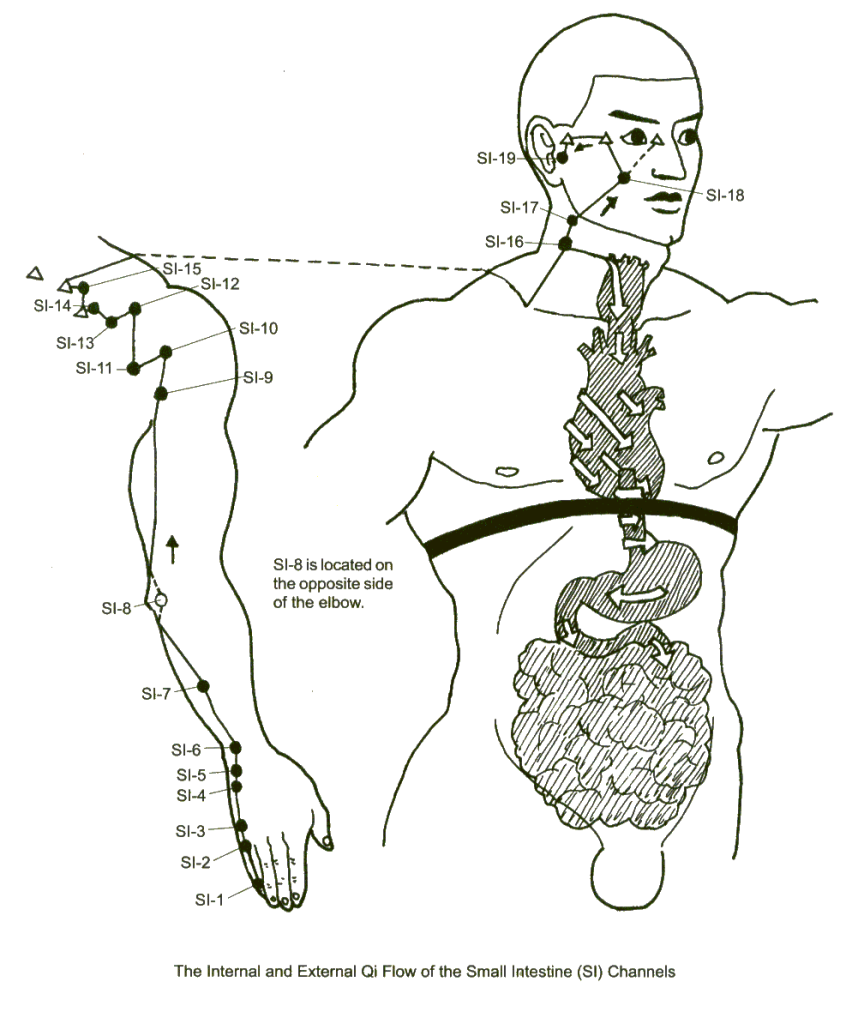
Small Intestine Meridian Points
SI 1 Acupuncture Point(Shaoze)
Location:0.1 cun posterior to the corner of the nail on the ulnar side of the little finger.
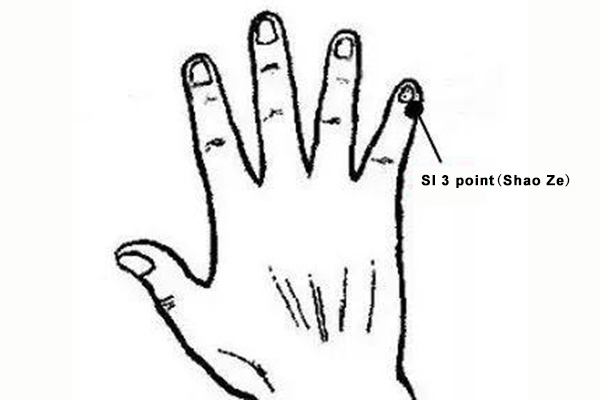
Usage:
- Relieve and treat headache, cerebrovascular disease, coma, etc.
- Relieve and treat tonsillitis, pharyngitis, conjunctivitis, cataract, etc.
- Relieve and treat mastitis and poor milk secretion.
- Efficacy: clearing away heat and beneficial for throat, refreshing brain and resuscitating.
SI 2 Acupuncture Point(Qiangu)
Location:When a loose fist is made, at the ulnar end of the crease, distal to the 5th metacarpophalangeal joint at the junction of the red & white skin.
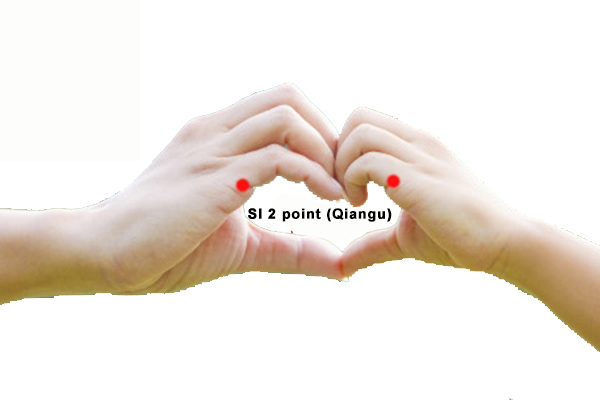
Usage:Rigidity of nape and headache, deafness, tinnitus, swelling and pain of eye, nasal congestion, sore throat, finger numbness,absence of or faulty secretion of milk following childbirth etc.
Location:When a loose fist is made, at the ulnar end of the distal palmar crease proximal to the 5th metacarpal phalangeal joint at the junction of the red & white skin.
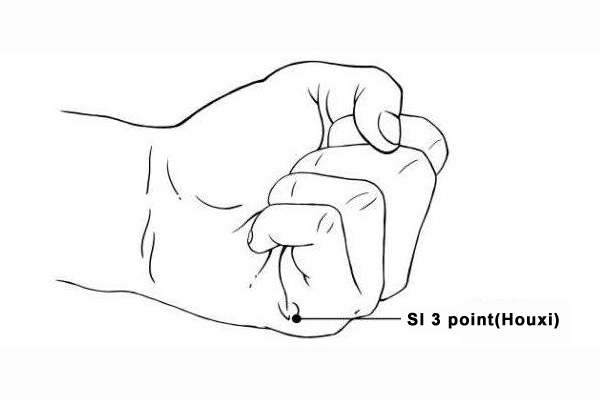
Usage:Rigidity of nape and headache, swelling and pain of eye, stiff neck, deafness, tinnitus, epistaxis, epilepsy, malaria, jaundice, night sweats, low back and leg pain, etc.
Location:On the ulnar side of the palm in a depression between the base of the 5th metacarpal joint and the hamate bone.
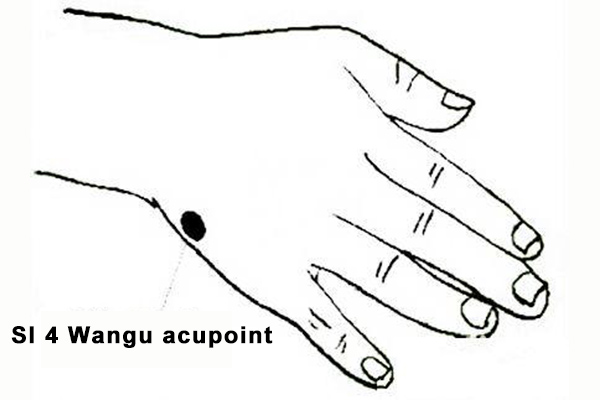
Usage:finger joint wrist pain, rigidity of nape and headache, jaundice, and malaria.
SI 5 Acupuncture Point(Yanggu)
Location:On the ulnar end of the transverse wrist crease in a depression between the styloid process of the ulna and the triquetral bone.
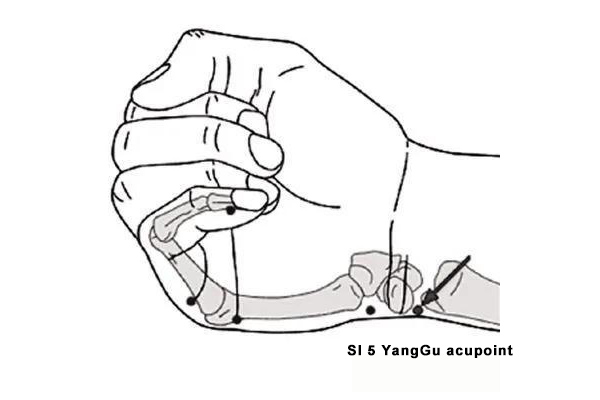
Usage:Pain syndromes, such as: neck swelling, lateral arm pain, and wrist pain; Head and face syndromes, such as: headache, dizziness, toothache, tinnitus, and deafness; Fever; Epilepsy;
SI 6 Acupuncture Point(Yanglao)
Location:Dorsal to the head of the ulna in the body cleft on the radial side of the styloid process, found with the palm facing the chest.
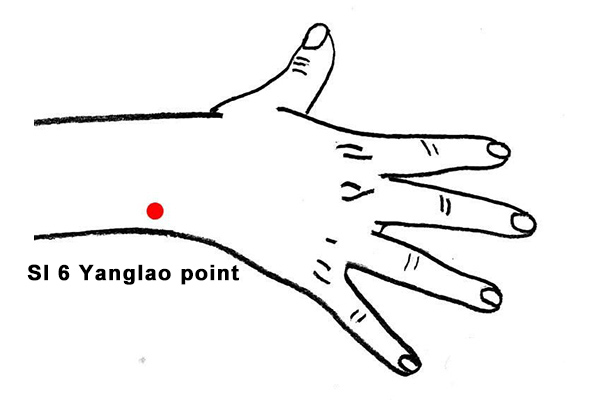
Usage:Myocardial infarction, cerebral thrombosis, hiccups, acute lumbar sprain, presbyopia, hand pain, facial pain, shoulder and arm neuralgia, stiff neck, hemiplegia, myopia, unclear vision, eyeball bleeding, etc.
SI 7 Acupuncture Point(Zhizheng)
Location:5 cun proximal to the dorsal crease of the wrist on the SI 5 to SI 8 line.
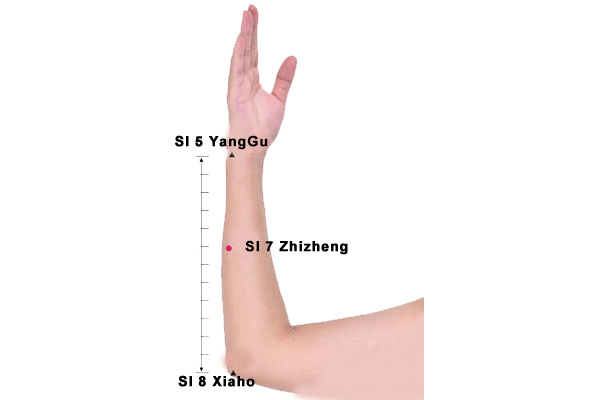
Usage:Stiff neck, headaches, vision issues – blurry, obstructed.Calms the spirit – manic behavior, anxiety, panic attacks, fear. Useful with onset of exterior wind-heat conditions such as colds/flus that start with neck and/or back pain.Local point for pain and/or strength/control issues in the elbow, arm, and fingers. May be helpful for weakness of all the limbs as well.
SI 8 Acupuncture Point(Xiaohai)
Location:Between the olecranon process of the ulna and the medial epicondyle of the humerus, found with the elbow flexed.
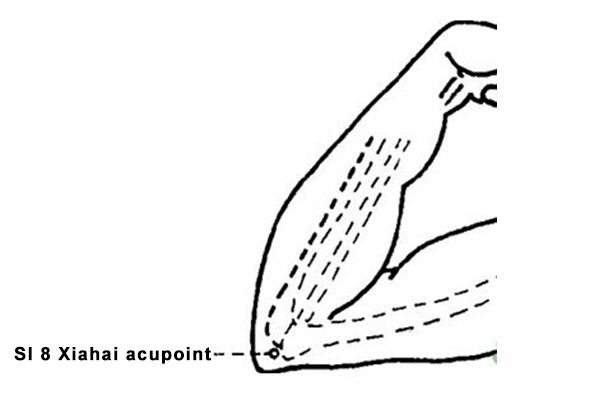
Usage:Headache, rigidity nape, tinnitus, cheek swelling, elbow and arm pain, epilepsy, etc
SI 9 Acupuncture Point(Jianzhen)
Location:1 cun above the posterior end of the axillary fold, posterior and inferior to the shoulder joint, found with the arm adducted.
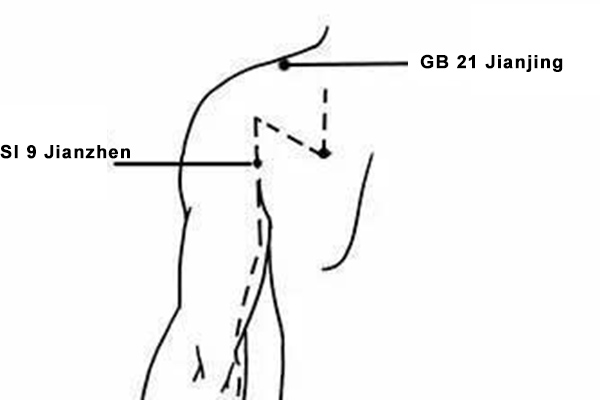
Usage:Paralysis of the upper limbs, periarthritis of the shoulder and lymph nodes.
SI 10 Acupuncture Point(Naoshu)
Location:With the arm abducted, directly above SI 9 in a depression inferior to the scapular spine.
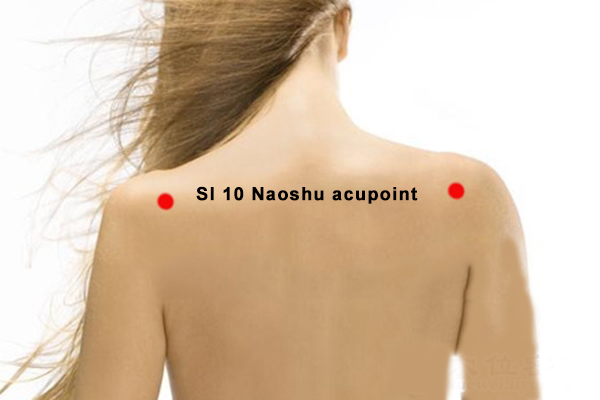
Usage:Local point for shoulder and upper arm pain, swelling and/or weakness.
Wind-heat, wind-cold – chills and fever.
SI 11 Acupuncture Point(Tianzong)
Location:On the scapula in a depression at the center of the infrascapular fossa, found at the junction of the upper and middle third between the lower scapular spine and the inferior angle of the scapula.
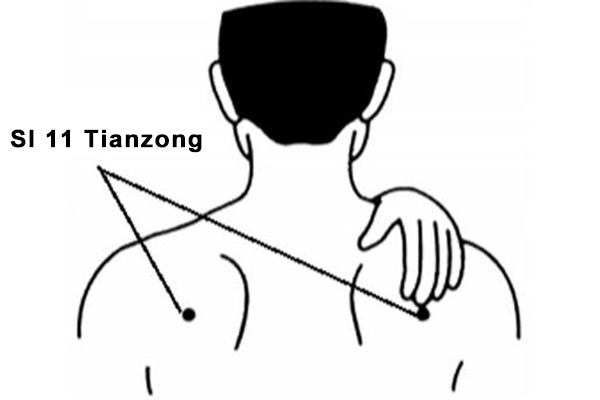
Usage:Local point for channel pain within the shoulder, scapula region, elbow, arm, face and jaw. Breast problems, mastitis, insufficient lactation, breast pain.Emotional issues, anxiety that presents with asthma, expands and relaxes the chest, asthma generally.
SI 12 Acupuncture Point(Bingfeng)
Location:Directly above SI 11 in the center of the suprascapular fossa, found in a depression when the arm is lifted.
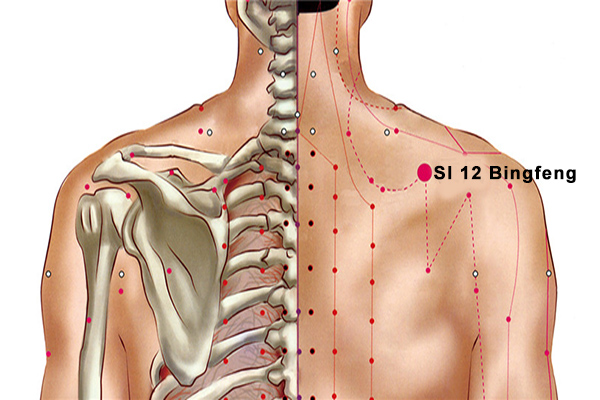
Usage:1. Movement system diseases: Tendinitis, frozen shoulder, scapular neuralgia;2. Others: bronchitis, etc.
SI 13 Acupuncture Point(Quyuan)
Location:At the medial extremity of the suprascapular fossa midway between SI 10 and the spinous process of T2.
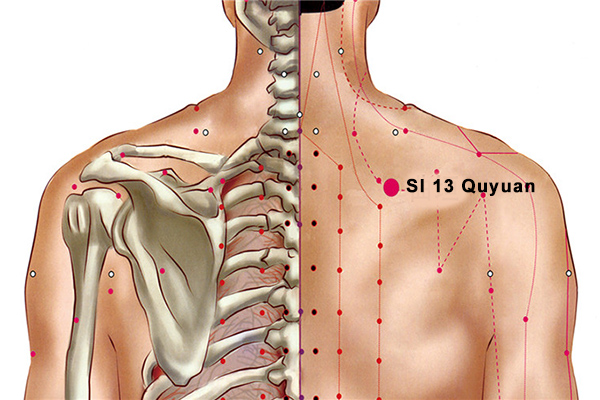
Usage:Local point for shoulder and/or scapular region pain, weakness and/or stiffness. Useful for chronic shoulder problems.
SI 14 Acupuncture Point(Jianwaishu)
Location:3 cun lateral to the spinous process of T1 (GV 13).
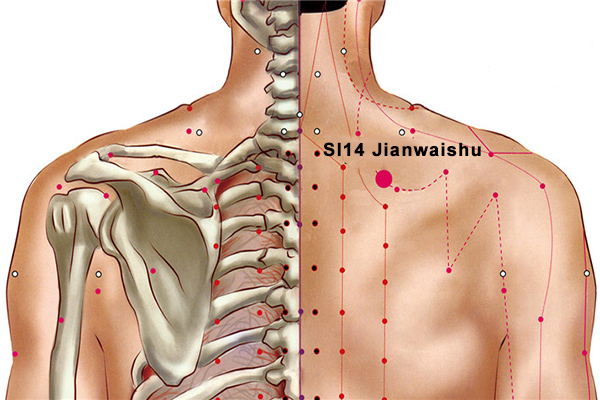
Usage:Local point for shoulder and scapular region pain.
Neck pain and/or rotation issues, and pain of the upper back.
SI 15 Acupuncture Point(Jianzhongshu)
Location:2 cun lateral to the spinous process of C7 (GV 14)
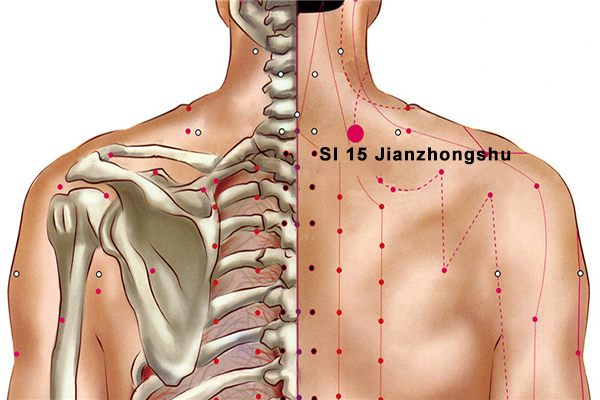
Usage:Asthma, cough, coughing up of blood (hemoptysis).
Local point for shoulder, neck and/or upper back pain.
SI 16 Acupuncture Point(Tianchuang)
Location:On the lateral side of the neck, posterior to the SCM and LI 18, level with the Adam’s apple.
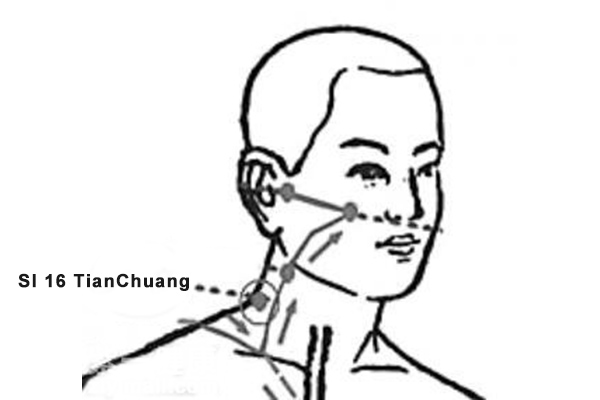
Usage:
- Tong Ren/Tam Healing System: Used to effect the circulation within the vertebral artery and the occipital artery. Useful for occipital headache, alzheimer’s, brain tumors, dyslexia, MS, and many brain issues related to circulation. Often used with Tian Dong as a starting point.
- Both SI 16 & SI 17 are Window of the Sky Points and are useful for throat distention, swelling, goiters, lumps in neck a/or throat, voice issues.
- Ear issues – tinnitus, deafness, pain.
- Local point for neck and/or shoulder problems.
- Falls into the category of Window of the Sky points within the Tam Healing system.
SI 17 Acupuncture Point(Tianrong)
Location:Posterior to the angle of the mandible in a depression on the anterior border of the SCM.
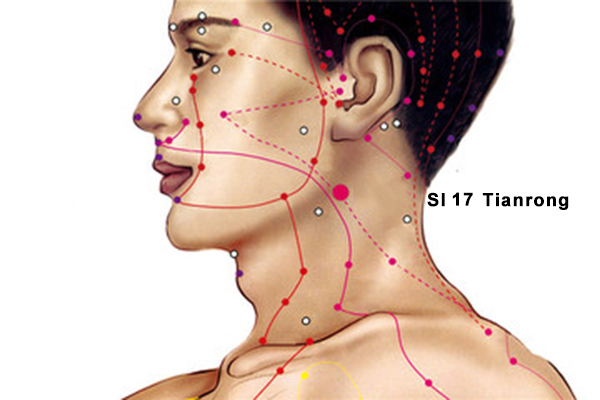
Usage:
- Chest oppression, wheezing, cough, asthma.
- Ear issues – tinnitus, deafness.
- Both SI 16 & SI 17 are Window of the Sky Points and are useful for throat distention, swelling, goiters, lumps in neck a/or throat.
- Falls into the category of Window of the Sky points within the Tam Healing system.
- Tong Ren/Tam Healing System: Used to effect the circulation to the brain, and the facial nerves. Useful for facial issues such as TMJ, gum problems, etc. Also used with headaches, hearing issues, dizziness and/or high blood pressure.
SI 18 Acupuncture Point(Quanliao)
Location:Directly below the outer canthus of the eye in a depression on the lower border of the zygoma.
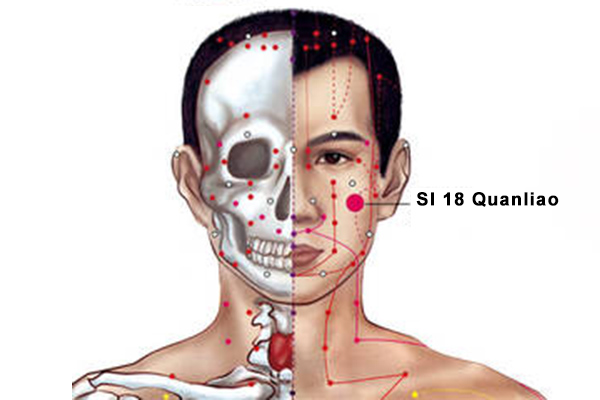
Usage:Upper jaw tootache.Local point for facial disorders, Bell’s palsy, trigeminal neuralgia, spasm, twitching of the eyelids, facial muscles, etc..Yellowing of the sclera.
SI 19 Acupuncture Point(Tinggong)
Location:Anterior to the tragus and posterior to the condyloid process of the mandible, in a depression formed when the mouth is opened.
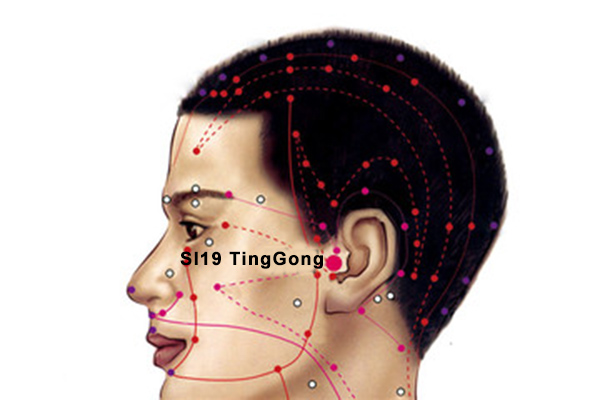
Usage:TMJ, toothache.Calms the spirit – manic behavior, epilepsy, sensation of pressure below the heart. Ear problems of any etiology, inflammation, deafness, tinnitus, hearing loss.
